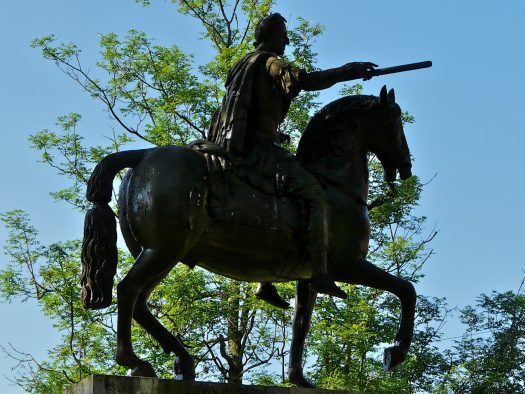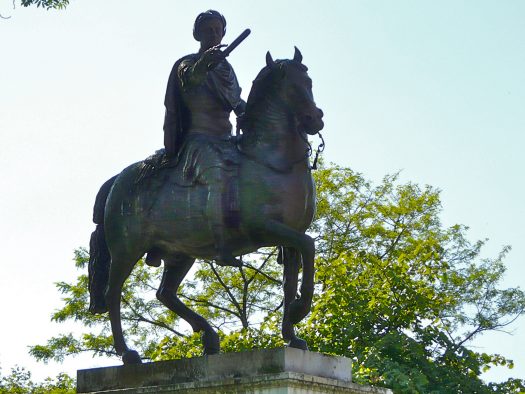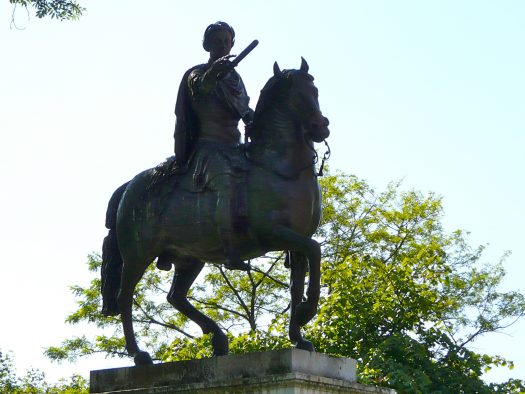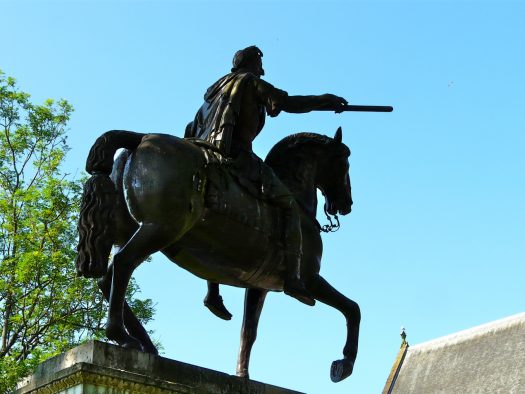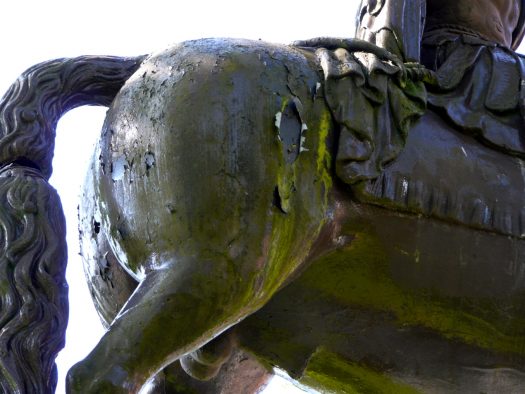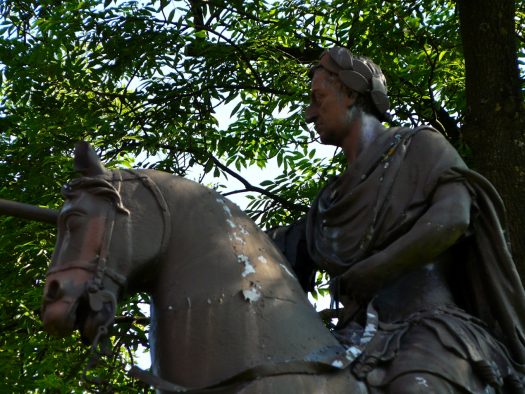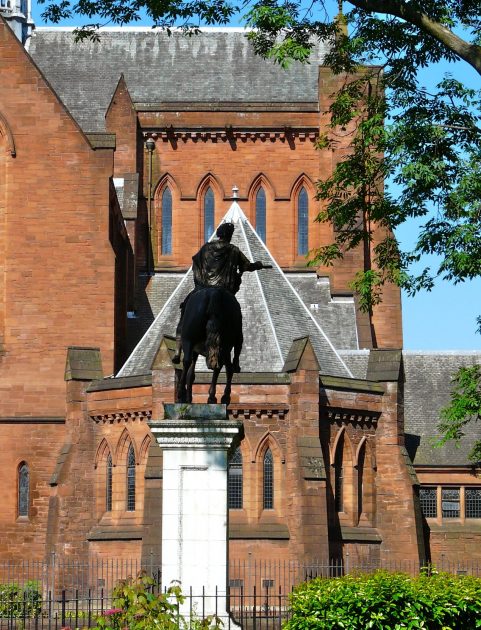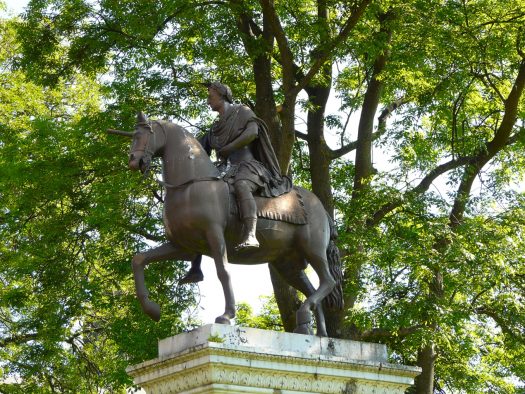- CountryUK
- Town:Glasgow
-
Year of creation:1735
- Rider(s):William III (William II of Scotland)
(1650 –1702), also widely known as William of Orange, was Prince of Orange from birth, Stadtholder of Holland, Zeeland, Utrecht, Guelders and Overijssel in the Dutch Republic from the 1670s and King of England, Ireland and Scotland from 1689 until his death. Popular histories usually refer to his joint reign with his wife, Queen Mary II, as that of William and Mary. As King of Scotland, he is known as William II. He is sometimes informally known as “King Billy” in Northern Ireland and Scotland, where his victory at the Battle of the Boyne in 1690 is still commemorated by Unionists and Ulster loyalists.
William was the only child of William II, Prince of Orange, who died a week before his birth, and Mary, Princess of Orange, the daughter of King Charles I of England. In 1677, during the reign of his uncle King Charles II of England, he married his cousin Mary, the fifteen-year-old daughter of Charles II’s brother James. A Protestant, William participated in several wars against the powerful Catholic King Louis XIV of France, in coalition with Protestant and Catholic powers in Europe. Many Protestants heralded him as a champion of their faith. In 1685, his Catholic uncle and father-in-law, James, became King of England, Scotland and Ireland. James’s reign was unpopular with the Protestant majority in Britain, who feared a revival of Catholicism. Supported by a group of influential British political and religious leaders, William invaded England in what became known as the Glorious Revolution. In 1688, he landed at the south-western English port of Brixham. Shortly afterwards, James was deposed.
William’s reputation as a staunch Protestant enabled him and his wife to take power. During the early years of his reign, he was occupied abroad with the Nine Years’ War (1688–97). Queen Mary II died in 1694. In 1696, the Jacobites plotted unsuccessfully to assassinate William and return his father-in-law to the throne. William’s lack of children threatened the Protestant succession. The danger was averted by placing distant relatives, the Protestant Hanoverians, in line. Upon his death in 1702, the king was succeeded in Britain by Anne and as titular Prince of Orange by his cousin, John William Friso.
- Sculptor(s):Scheemakers, Peter
(1691 –1781) was a Flemish Roman Catholic sculptor
-
It is said that the tail of the Glasgow statue moves in a ball and socket to prevent it being broken by unruly people during times of riot, but the only thing visible is that maintenance of this historic statue is greatly overdue. The pictures of details clearly show the need for repair.
The steed and its rider were looked upon by the citizens of its time with pride and wonder. John McUre, whose History of Glasgow was published just two years after the erection of the statue, bursts into enthusiastic song on the subject:
Methinks the steed doth spread with corps the plain, Tears up the turf, and pulls the curbing rein, Exalts his thunder neck and lofty crest,To force through ranks and files his stately breast! His nostrils glow, sonorous war he hears, He leapeth, jumpeth, pricketh up his ears, Hoofs up the turf, spreads havoc all around, Till blood in torrents overflows the ground!
